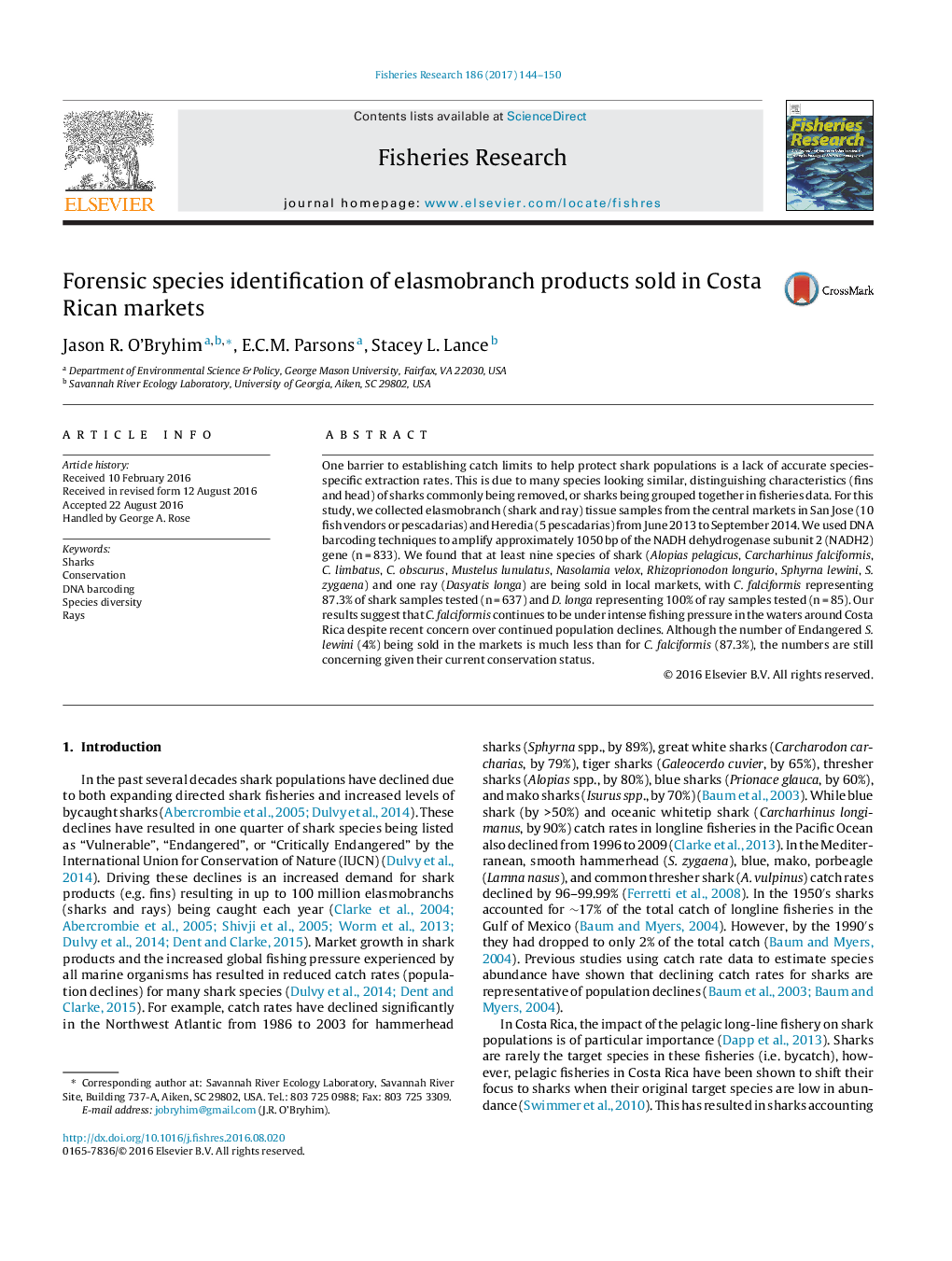| کد مقاله | کد نشریه | سال انتشار | مقاله انگلیسی | نسخه تمام متن |
|---|---|---|---|---|
| 4542609 | 1413079 | 2017 | 7 صفحه PDF | دانلود رایگان |
• Used DNA barcoding to identify elasmobranchs being sold in two Costa Rican markets.
• Nine species of shark and one ray were identified in the markets.
• Fewer species represented in the markets than in fisheries observer data.
• Despite conservation concern silky sharks still accounted for ∼80% of samples.
• Endangered scalloped hammerhead also identified in the Costa Rican markets.
One barrier to establishing catch limits to help protect shark populations is a lack of accurate species-specific extraction rates. This is due to many species looking similar, distinguishing characteristics (fins and head) of sharks commonly being removed, or sharks being grouped together in fisheries data. For this study, we collected elasmobranch (shark and ray) tissue samples from the central markets in San Jose (10 fish vendors or pescadarias) and Heredia (5 pescadarias) from June 2013 to September 2014. We used DNA barcoding techniques to amplify approximately 1050 bp of the NADH dehydrogenase subunit 2 (NADH2) gene (n = 833). We found that at least nine species of shark (Alopias pelagicus, Carcharhinus falciformis, C. limbatus, C. obscurus, Mustelus lunulatus, Nasolamia velox, Rhizoprionodon longurio, Sphyrna lewini, S. zygaena) and one ray (Dasyatis longa) are being sold in local markets, with C. falciformis representing 87.3% of shark samples tested (n = 637) and D. longa representing 100% of ray samples tested (n = 85). Our results suggest that C. falciformis continues to be under intense fishing pressure in the waters around Costa Rica despite recent concern over continued population declines. Although the number of Endangered S. lewini (4%) being sold in the markets is much less than for C. falciformis (87.3%), the numbers are still concerning given their current conservation status.
Journal: Fisheries Research - Volume 186, Part 1, February 2017, Pages 144–150
